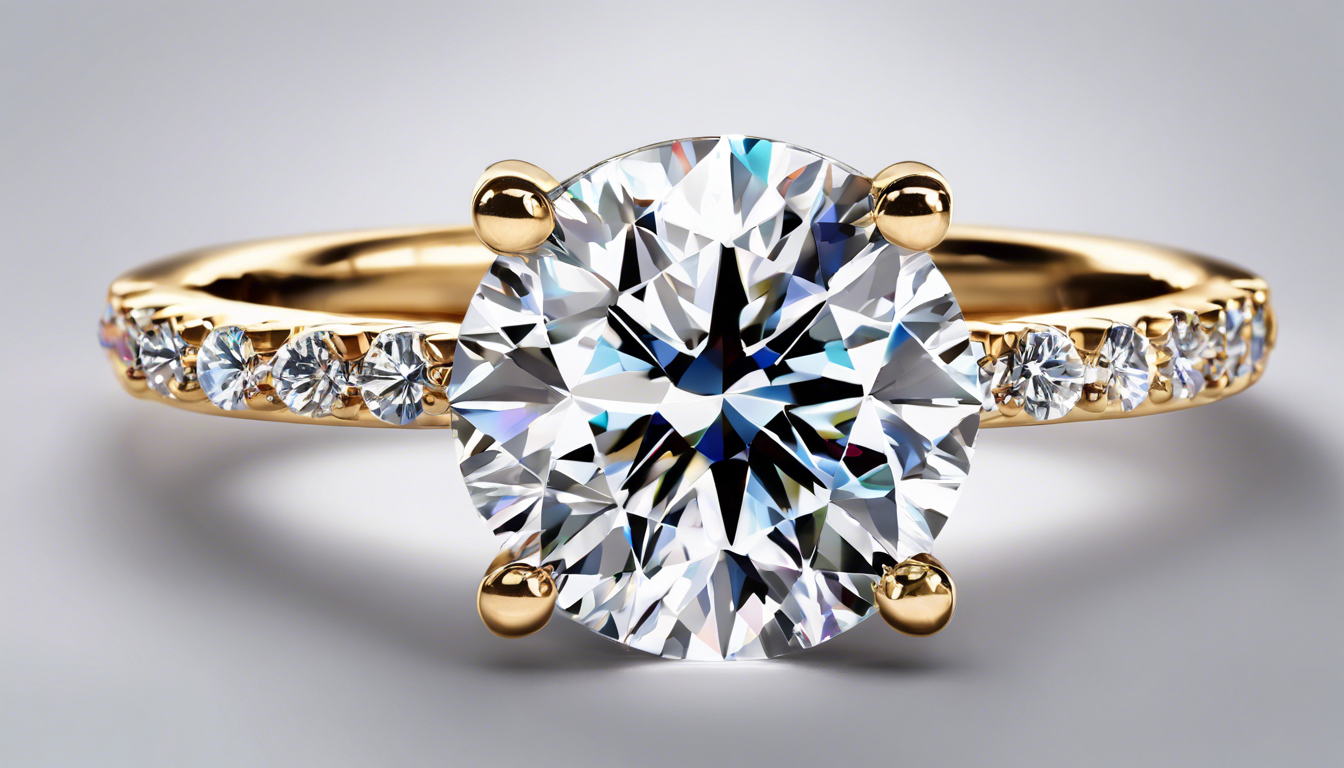What is a Moissanite Diamond? Discover the Sparkling Alternative to Diamonds

Are you curious about what a moissanite diamond is and how it stacks up against traditional diamonds?
If you're in the market for a sparkling gemstone or just fascinated by unique alternatives, you're in the right place!
Moissanite is gaining popularity not just for its stunning brilliance, but also for its affordability and ethical sourcing.
In this article, we'll dive deep into the world of moissanite diamonds, exploring their definition, interesting history, comparisons with real diamonds, and much more.
Let’s embark on this sparkling journey together!

Key Takeaways
- Moissanite diamonds are a lab-created alternative to traditional diamonds, known for their exceptional brilliance.
- Discovered in 1893 by Henri Moissan, moissanite originates from a rare mineral found in meteorites.
- Moissanites offer a more affordable price point while mimicking the visual characteristics of diamonds.
- They are popularly used in engagement rings and other fine jewelry due to their durability and sparkle.
- Caring for moissanite jewelry involves regular cleaning and avoiding harsh chemicals to maintain its brilliance.
Definition of Moissanite Diamonds
So, what is a moissanite diamond?
Moissanite is a gemstone that closely resembles a diamond but is actually made from silicon carbide.
Discovered in 1893 by French chemist Henri Moissan, moissanite was initially found in a meteorite, which is quite fascinating!
Unlike traditional diamonds, which are formed deep within the Earth over millions of years, moissanite is typically created in a lab.
This not only makes it more affordable but also provides an eco-friendly alternative.
Its incredible brilliance and fire set it apart, giving it a sparkle that can outshine even the finest diamonds.
Many people are choosing moissanites for engagement rings and other jewelry because of these unique properties.
Historical Background and Discovery
When exploring the fascinating world of gemstones, one may stumble upon the term 'moissanite diamond' and wonder, what exactly is a moissanite diamond?
Let's take a journey back in time to understand its historical background.
Discovered in 1893 by the French chemist Henri Moissan, this remarkable mineral was initially found in a meteorite crater in Arizona, making it an out-of-this-world discovery!
Moissan was originally looking for diamonds, but instead, he found silicon carbide crystals, which would later be named moissanite in his honor.
At that time, its rarity and beauty caught the attention of gem enthusiasts and scientists alike.
It wasn't until the late 20th century that scientists developed a method to create moissanite in a lab, leading to the synthetic variety we know today.
So, if you're curious about what is a moissanite diamond, not only are you looking at a stunning alternative to traditional diamonds, but you're also gazing at a gem with a cosmic heritage!
'The true measure of a diamond is not the size, but the fiery sparkle it holds within.' - Unknown

Comparison Between Moissanite and Traditional Diamonds
When it comes to understanding what is a moissanite diamond, it's essential to compare it with traditional diamonds to appreciate their unique qualities.
Moissanite, originally discovered in a meteorite, is now lab-created and has gained popularity for its brilliance and affordability.
Unlike traditional diamonds, which are formed over billions of years deep within the Earth, moissanites undergo a fascinating, environmentally friendly manufacturing process in laboratories.
This allows them to be more budget-friendly and accessible.
Furthermore, moissanite boasts a higher refractive index, meaning it sparkles even more intensely than diamonds.
However, in terms of hardness, both gemstones rank similarly, with diamonds being a bit harder on the Mohs scale.
This comparison highlights that while traditional diamonds have long been the symbol of luxury, moissanite offers a magnificent alternative that combines beauty, durability, and ethical production, making it a fantastic choice for engagement rings and other fine jewelry.
Popular Uses and Applications of Moissanite
When it comes to understanding what is a moissanite diamond, it's essential to delve into its growing popularity in various applications, particularly in the jewelry industry.
Moissanite, a lab-created gemstone, resembles diamonds but is actually made of silicon carbide, which gives it exceptional brilliance and fire.
Many people are opting for moissanite diamonds for engagement rings and other fine jewelry due to their affordability and stunning appearance.
Beyond jewelry, moissanite's durability makes it suitable for industrial applications, such as cutting tools and abrasives.
Additionally, as a sustainable gem option, it appeals to eco-conscious consumers looking for an ethical alternative to mined diamonds.
The versatility and overall appeal of moissanite ensure its role in contemporary fashion and technology, making it a popular choice among modern shoppers.

Care and Maintenance of Moissanite Jewelry
When you invest in beautiful jewelry, knowing how to care for it is essential, especially with stunning pieces made from moissanite.
So, what is a moissanite diamond?
Moissanite is a lab-created gemstone that closely resembles a diamond in appearance, boasting incredible brilliance and fire.
The good news is that taking care of your moissanite jewelry is quite straightforward.
Regularly clean your pieces with warm soapy water and a soft brush to remove any accumulated dirt or oils.
Avoid exposing your moissanite to harsh chemicals, as they can dull its sparkle over time.
Also, store your moissanite jewelry separately from other pieces to prevent scratches.
By following these simple care and maintenance tips, you can ensure that your moissanite sparkle remains as dazzling as the day you bought it!
Frequently Asked Questions
What is a moissanite diamond?
Moissanite is a gemstone that closely resembles a diamond but is made of silicon carbide.
It is renowned for its brilliance and fire, offering a stunning alternative to traditional diamonds.
How is moissanite different from diamonds?
While both moissanite and diamonds are hard and sparkly, the key differences lie in their composition and optical properties.
Moissanite has a higher refractive index, making it appear even more brilliant under light compared to diamonds.
Where did moissanite come from?
Moissanite was first discovered in 1893 by French chemist Henri Moissan in a meteorite.
It was later synthesized in laboratories, allowing for the creation of high-quality gemstones that are now widely available.
What are the popular uses of moissanite?
Moissanite is primarily used in jewelry, including engagement rings, earrings, and necklaces.
Its affordability and visual appeal make it a popular choice for couples seeking alternatives to traditional diamond jewelry.
How do I care for my moissanite jewelry?
Caring for moissanite jewelry is similar to caring for diamonds.
Regular cleaning with mild soap and water, and avoiding harsh chemicals will keep your moissanite sparkling.
It’s also advisable to store it separately to prevent scratching.
